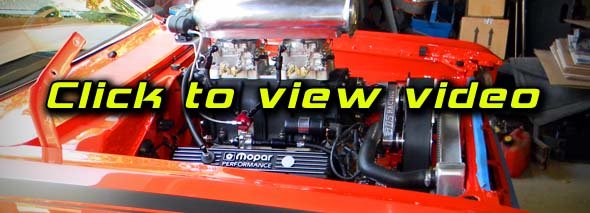

Prior to installing the new engine I swapped out the power steering box for a manual unit. The details of the conversion are outlined elsewhere.
I also took the opportunity to change the steering idler arm which was showing wear at less than 1000 miles. When I rebuilt the suspension the first time around those parts were part of a kit from ESPO - and I'm sure not of the best quality. I installed an actual Moog part that was, even by outward appearances, visibly superior.
I had a PTC torque converter rated at a mild 2,800 rpm stall that I wasn't entirely happy with. I would describe the seat-of-the-pants feel as "mushy". It just wasn't as responsive as I'd like to have on the street. So, while the trans was out I decided to put an old stock converter in that I had laying around. (The first time out for a test drive and I was much happier with the stock converter - much snappier feel).
That's not to knock the guys who like to run loose converters on the street. I wouldn't have considered the PTC to be particularly loose but I didn't care for it.
I also took the opportunity to change the steering idler arm which was showing wear at less than 1000 miles. When I rebuilt the suspension the first time around those parts were part of a kit from ESPO - and I'm sure not of the best quality. I installed an actual Moog part that was, even by outward appearances, visibly superior.
I had a PTC torque converter rated at a mild 2,800 rpm stall that I wasn't entirely happy with. I would describe the seat-of-the-pants feel as "mushy". It just wasn't as responsive as I'd like to have on the street. So, while the trans was out I decided to put an old stock converter in that I had laying around. (The first time out for a test drive and I was much happier with the stock converter - much snappier feel).
That's not to knock the guys who like to run loose converters on the street. I wouldn't have considered the PTC to be particularly loose but I didn't care for it.
When doing an engine swap with Schumacher conversion mounts (such as my Slant 6 to BB swap) the driver side K-member mount has to be clearanced for the oil pump. Removing material leaves it weaker in the area where the mount bolts to the K-member.
Since I had had a 1/4" Schumacher shim sandwiched between the K and the mount anyway I decided to do away with the shim and weld in a 1/4" plate to do double duty as a shim and reinforce the K-member in this area.
Even though I use a driver side torque strap, this plate will help add needed strength to the mount.
Since I had had a 1/4" Schumacher shim sandwiched between the K and the mount anyway I decided to do away with the shim and weld in a 1/4" plate to do double duty as a shim and reinforce the K-member in this area.
Even though I use a driver side torque strap, this plate will help add needed strength to the mount.
The headers easily drop into place just before the engine is set on the mounts. After that the blower and other accessories are quickly added.
Mockup on a stand outside the vehicle helps everything come together quickly.
Mockup on a stand outside the vehicle helps everything come together quickly.
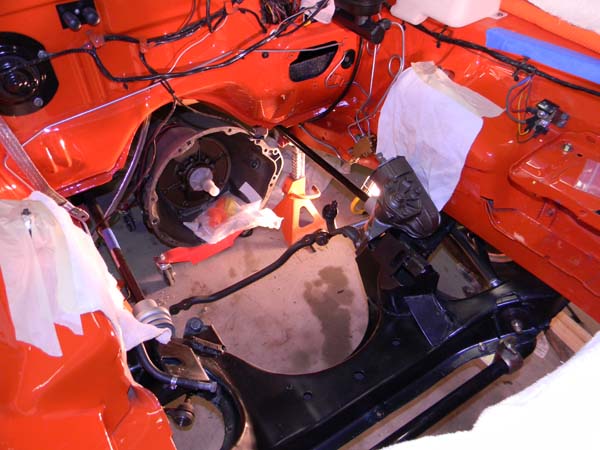

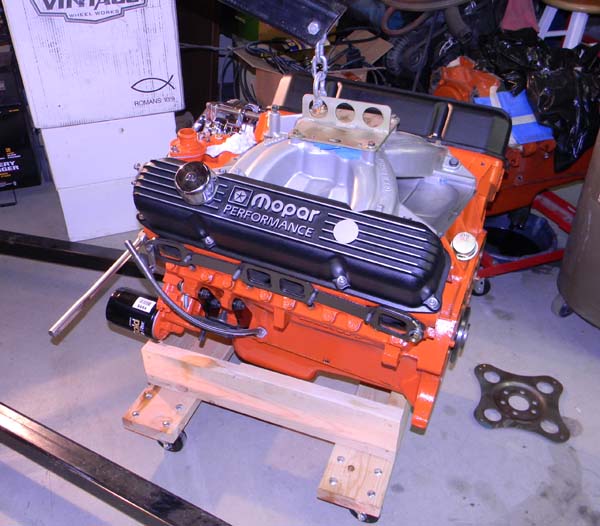
The blower was removed and a 4 barrel manifold temporarily bolted on with a lift plate for installation. I even used the hoist to set the blower in place on top of the engine later. Much easier on the back.
By the way, my 2X6 engine dolly's work great for rolling engines around.
By the way, my 2X6 engine dolly's work great for rolling engines around.
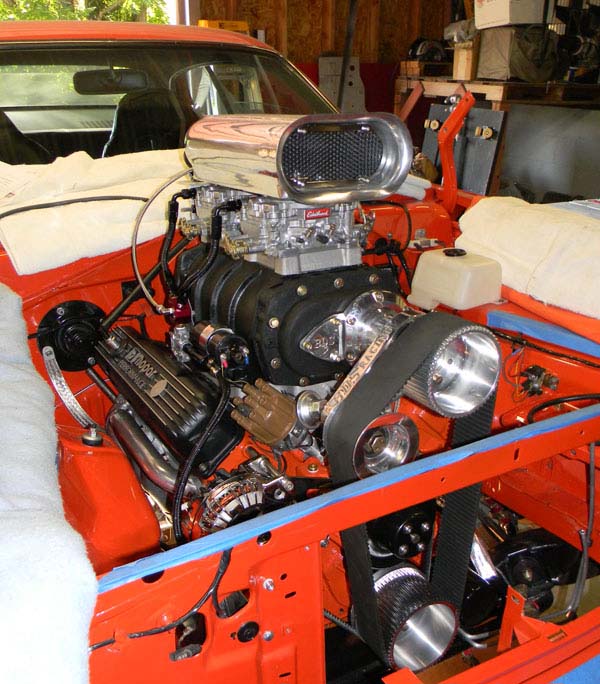

A bracket was fabbed to temporarily hold a vacuum/boost, and fuel pressure gauge until a hood could be installed. Without these two gauges there's no what to know what's going on with the engine. Are boost levels for some reason unusually low or high? Has fuel pressure dropped causing a potentially piston-melting lean condition, or the pump not keeping up at high RPM? This is important to know.
I'd later find out that engine harmonics (vibration) would have an adverse effect on the Auto Meter fuel pressure gauge - only evident at high RPM's. Unless you have a liquid filled gauge, don't mount it on the engine. The delicate movement can't handle it. Auto Meter was kind enough to replace it under warranty and all was well when I relocated them to the hood.
Carb linkage is disconnected to allow adjustment for the first fire-up and break-in.
I'd later find out that engine harmonics (vibration) would have an adverse effect on the Auto Meter fuel pressure gauge - only evident at high RPM's. Unless you have a liquid filled gauge, don't mount it on the engine. The delicate movement can't handle it. Auto Meter was kind enough to replace it under warranty and all was well when I relocated them to the hood.
Carb linkage is disconnected to allow adjustment for the first fire-up and break-in.

Plumbed, wired, and ready to fire. Spark plugs are NGK racing plugs part no. R5670-7 (stock No, 2891) which are two heat ranges cooler than a stock plug.
A spark plugs heat range refers to its ability to dissipate heat from the firing end of the plug and combustion chamber. A colder plug dissipates heat faster. Blowers raise compression and as compression goes up, so does cylinder temperatures. As temperature goes up, so does the chance of detonation and detonation is your worst enemy with a blower. Detonation leads to engine damage - and with a blower, the damage will occur much faster.
The worst thing that can happen with too cold a plug is, the plug fouls out. No big deal. Plugs are cheap to replace.
A spark plugs heat range refers to its ability to dissipate heat from the firing end of the plug and combustion chamber. A colder plug dissipates heat faster. Blowers raise compression and as compression goes up, so does cylinder temperatures. As temperature goes up, so does the chance of detonation and detonation is your worst enemy with a blower. Detonation leads to engine damage - and with a blower, the damage will occur much faster.
The worst thing that can happen with too cold a plug is, the plug fouls out. No big deal. Plugs are cheap to replace.
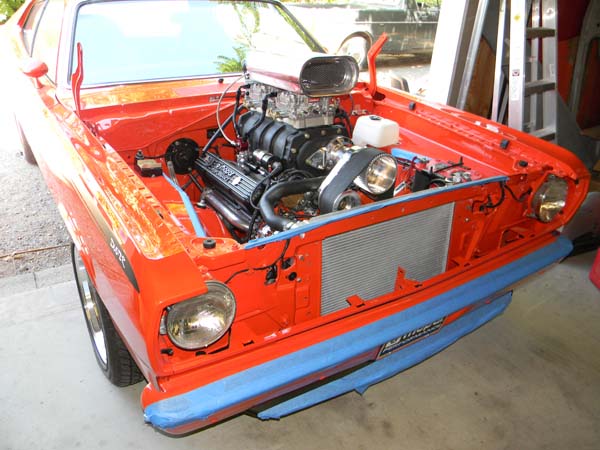
On Saturday, July 21, we rolled it out to give birth (or rebirth)!
The pusher electric fan was not here so we set up a high powered snail blower to force air through the radiator during startup. Since the cam and lifters were a carryover from the first engine, a traditional break-in was not necessary - the rings just needed to be seated.
The pusher electric fan was not here so we set up a high powered snail blower to force air through the radiator during startup. Since the cam and lifters were a carryover from the first engine, a traditional break-in was not necessary - the rings just needed to be seated.

My son Austin (15 yrs here) monitored vitals - just like he did back in 2008.
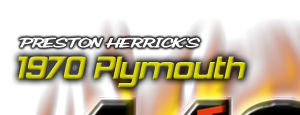 |
 |
 |
 |
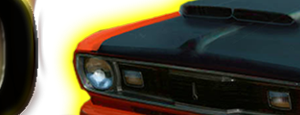 |
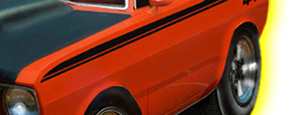 |
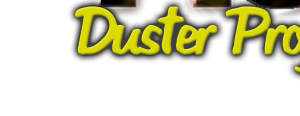 |
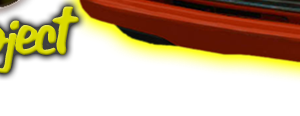 |
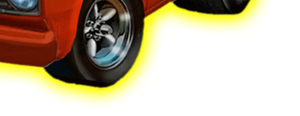 |
© 2013 JP Herrick Enterprises - All Rights Reserved
Site updated: January 2014

